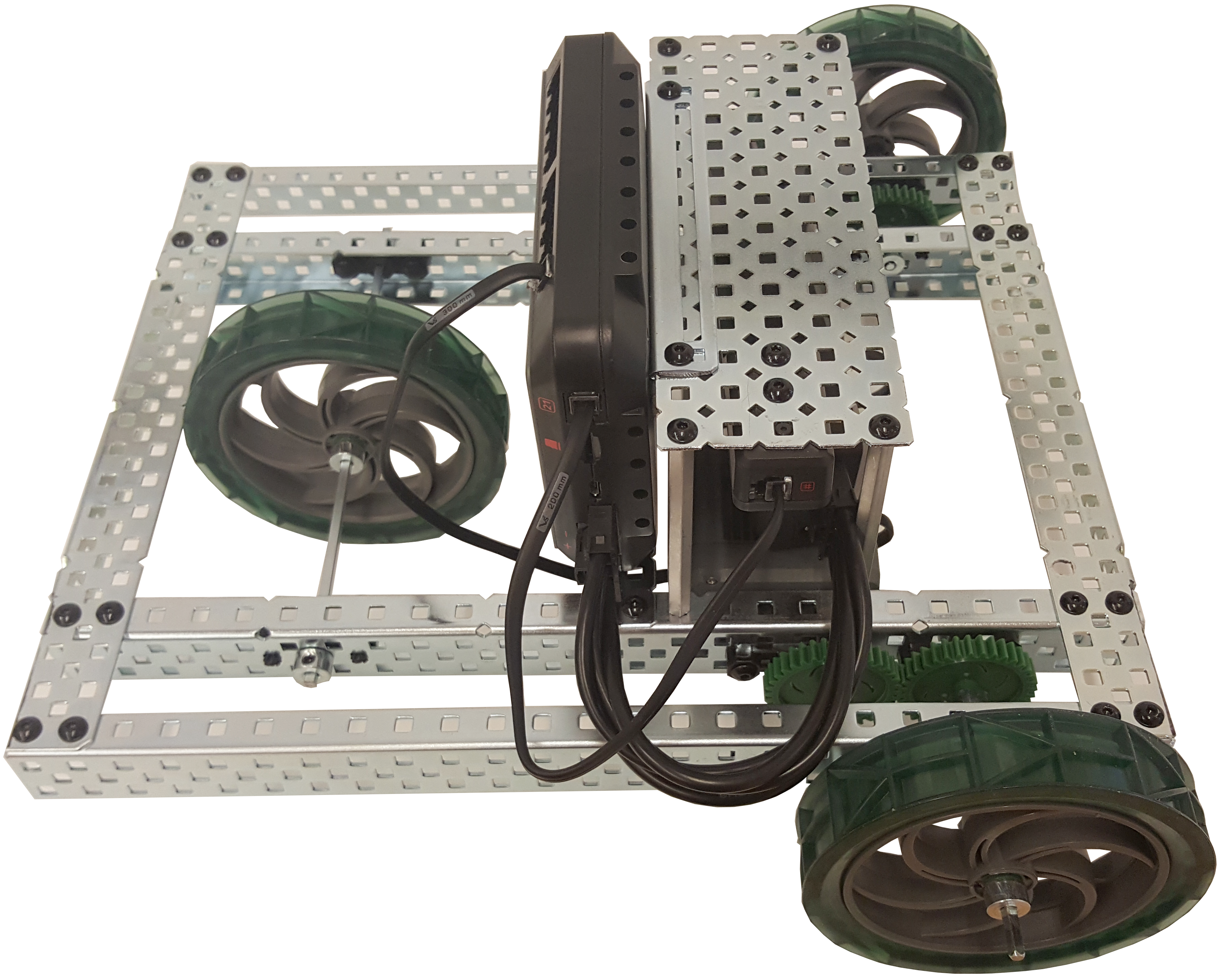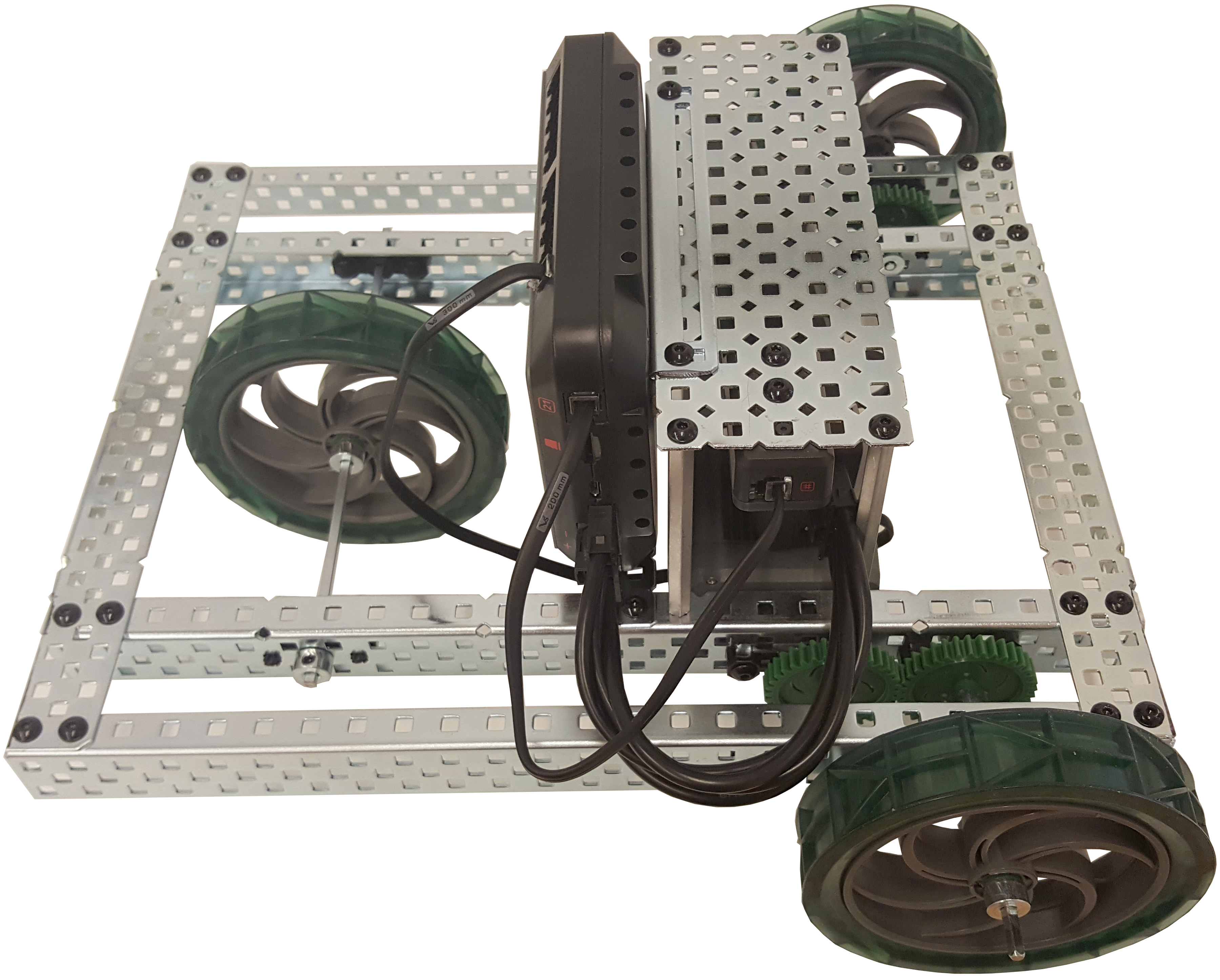REC Unit 1 introduces students to the world of robotics. Students learn fundamental engineering concepts, such as the engineering design cycle and how to maintain an engineering notebook, then use these concepts throughout the course as they construct their first Vex robot, the BaseBot. An entire section is dedicated to safety in the classroom. After the robot is constructed, the students test, troubleshoot and operate their creation. The final project involves operating the BaseBot to complete a challenge on the playing field.
Catalog number: 88-8115-0010
[Ver: 2.0.0.2]

REC Unit 2 introduces students to programming with Vex V5. Fundamental programming concepts like loops, statements, variables, constants and assignments are reinforced with activities and worksheets. Students learn the differences between RC control of the robot and autonomous control, and create simple programs to command the robot to go forward, backward, left and right. They learn how to simplify their code using functions. In the final project, students use their new programming skills to make the BaseBot follow complex paths.
Catalog Number: 77-8115-0020
[Ver: 1.0.2.2]

REC Unit 3: Physics and Robotics reviews fundamental physics concepts such as speed and torque and shows how they apply to robotics. Students also learn about motors and how they are used in robotics by testing the Vex motors on the BaseBot and logging performance information into the engineering notebook. Topics like angular velocity, linear motion, gear ratios, weight, friction, torque and acceleration are all introduced and reinforced with activities related to robotics. The final project challenges students to pull a weighted sled with the BaseBot.
Catalog No. 77-8115-0030
[Ver: 1.0.1.1]

REC Unit 4: Sensors introduces students to open and closed loop robotic navigation using sensors. Building on programs constructed in Unit 2, students add digital bumper switches, ultrasonic range-finding sensors and line-following sensors to the BaseBot so that it can interpret its environment autonomously. Students learn advanced drive functions to simplify the autonomous control of the robot. In the final project the robot must autonomously locate and interact with objects on the playing field in a specified time period.
Catalog No. 77-8115-0040
[Ver: 1.0.2.2]

REC Unit 5: Arms and End Effectors builds on the concepts learned in Units 3 and 4. An arm and end effector is added to the BaseBot and a physics analysis is done on how the addition of the arm affects the overall robot design. Students are challenged to control the movement of the arm by modifying the design of the arm and programming. In the final activity, students must program the BaseBot to interact with a ball on the playing field while using radio control.
Catalog Number: 77-8115-0050
[Ver: 1.0.2.2]

This two-week project reinforces all the concepts covered in REC 1 and adds the excitement of robotic competitions to the learning process. Student teams create a robot to perform the specified tasks on the playing field and compete in two separate competitions - one operating the robot using radio control, the second operating the robot autonomously, with no user input.
Catalog Number 77-8115-0060
[Ver: 1.0.2.2]
